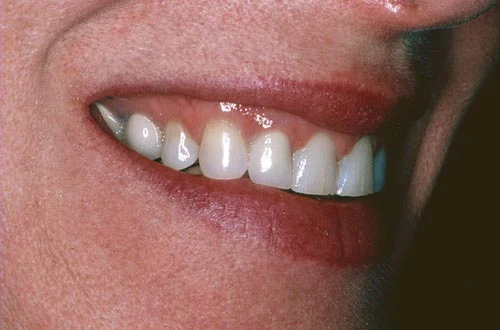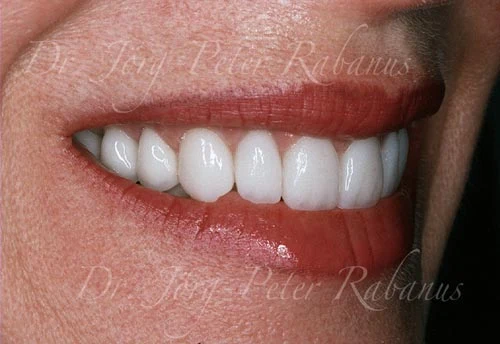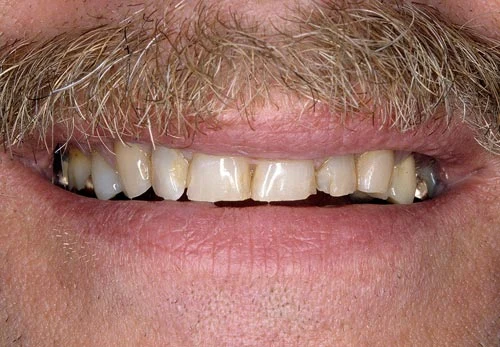Are Porcelain Veneers and Worn Teeth Compatible?


We have arrived in an era where it has become apparently simple to correct aesthetic shortcomings of the human body. Cosmetic enhancements are achieved with plastic surgery, reconstructive medicine, oral rehabilitation, and cosmetic dentistry in particular.

While smile makeovers are considered purely aesthetic by many professionals and laymen alike, they are deeply embedded in basic understandings of human anamtomy, physiology, and pathology. Cosmetic dentistry cannot be seperated from the well being and functionality of a human body. It is integrated into a biological system that has developed in the particular physical environment of this planet. The human body is built for survival. Teeth take an integral part in it. Hence, they cannot be isolated from the human body. They have developed within the functional framework of our skulls. Their functions are numerous.
Premature wear of teeth is not just coincidental to the aging process of the human body. It is sometimes considered an apparent localized premature aging, caused by erosive and abrasive foods, neurogenic dysfunctions, damaging habits, and physiological derailments, such as GERD.
A layman often does not even know that he or she has a disorder that caused one’s natural dentition to prematurely age. They seek a cosmetic dentist because they feel that their teeth simply look too short, too worn, too dingy. They feel that porcelain veneers might be the solution.
Trained cosmetic dentists know that porcelain veneers need TLC. They know that the new home of dental restorations, an oral cavity and its surrounding functional structures, needs to be prepared to allow them to move in and feel comfortable. If a patient successfully wore down his or her teeth to short little knobs, he or she will also do this with porcelain veneers. And simply turning back the clock in an instant by rebuilding teeth to the way they used to look at the age of eighteen might shock the stomatognathic system, causing all kinds of discomfort and havoc.
As much as a mouth has to be prepared for a smile makeover or a smile rejuventation, porcelain restorations have to be prepared and designed prior to their union.
It is the responsibility of a cosmetic dentist to explain this to anyone who seeks cosmetic dentistry. It might be the first time that the patient gets confronted with the fact that he or she has a premature wear pattern. However, the reasons for worn teeth have to be evaluated as the most important step prior to outlining a treatment plan towards a new smile.


Dental wear often leads to cracked and damaged teeth.
Due to the changes of bite relationships of some dentitions, dental wear may only be corrected by comprehensive smile makeovers.
Do you look for a cosmetic dentist in San Francisco? Contact Dr. Jorg-Peter Rabanus. He is accredited by the American Academy of Cosmetic Dentistry
References:
Functional considerations of the masticatory system during prosthodontic procedures.
Wolfe MD. Inside Dentistry. Jan 2017; 61-68.
Dental occlusion: A critical reflection on past, present and future concepts.
Turp JC. J Oral Rehabil. 2008; 35(6): 446-453.
Dawson PE. Functional Occlusion: From TMJ to Smile Design. St. Louis, MO; Mosby; 2006.
Comparing condylar positions achieved through bimanual manipulation to condylar positions achieved through masticatory muscle contraction against an anterior deprogrammer: A pilot study.
McKee JR. J Prosthetic Dentistry. 2005; 94(4); 389-393.
Abnormal occlusion conditions: a forgotten part of dentistry.
Christensen GJ. J Amer Dental Assoc. 1995; 126(12); 1667-1668.
The significance of occlusion in restorative dentistry.
Parker MW. Dental Clinic North Am. 1993; 37(3); 341-351.
The horizontal position of the maxillary incisal edge: the key to optimum esthetic, phonetics, and function.
Craham J. Contemp Esthetics and Rest Pract. 2006; 10(2); 22-24.



